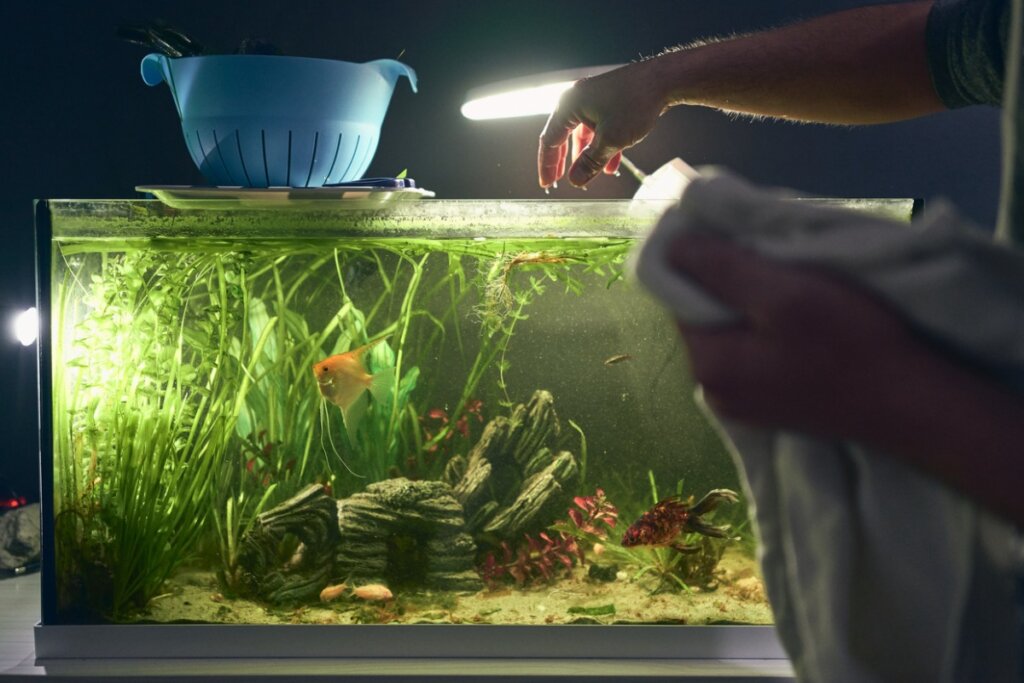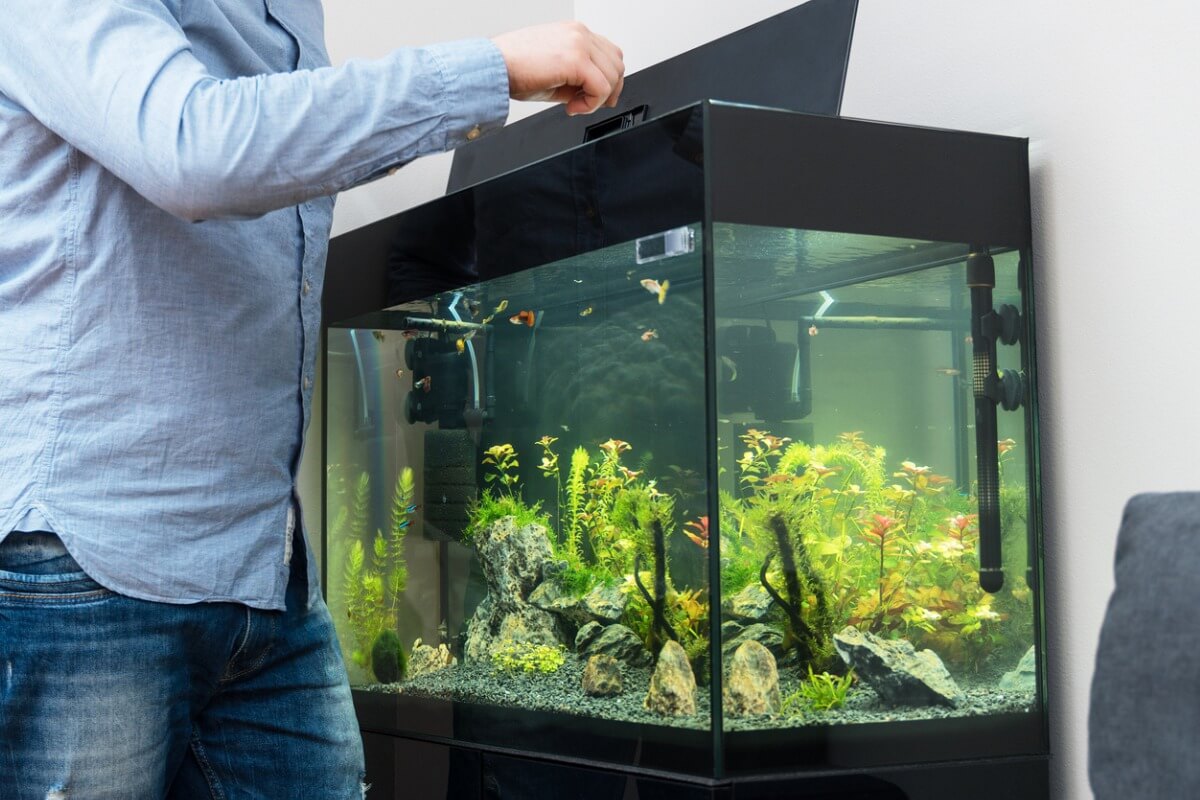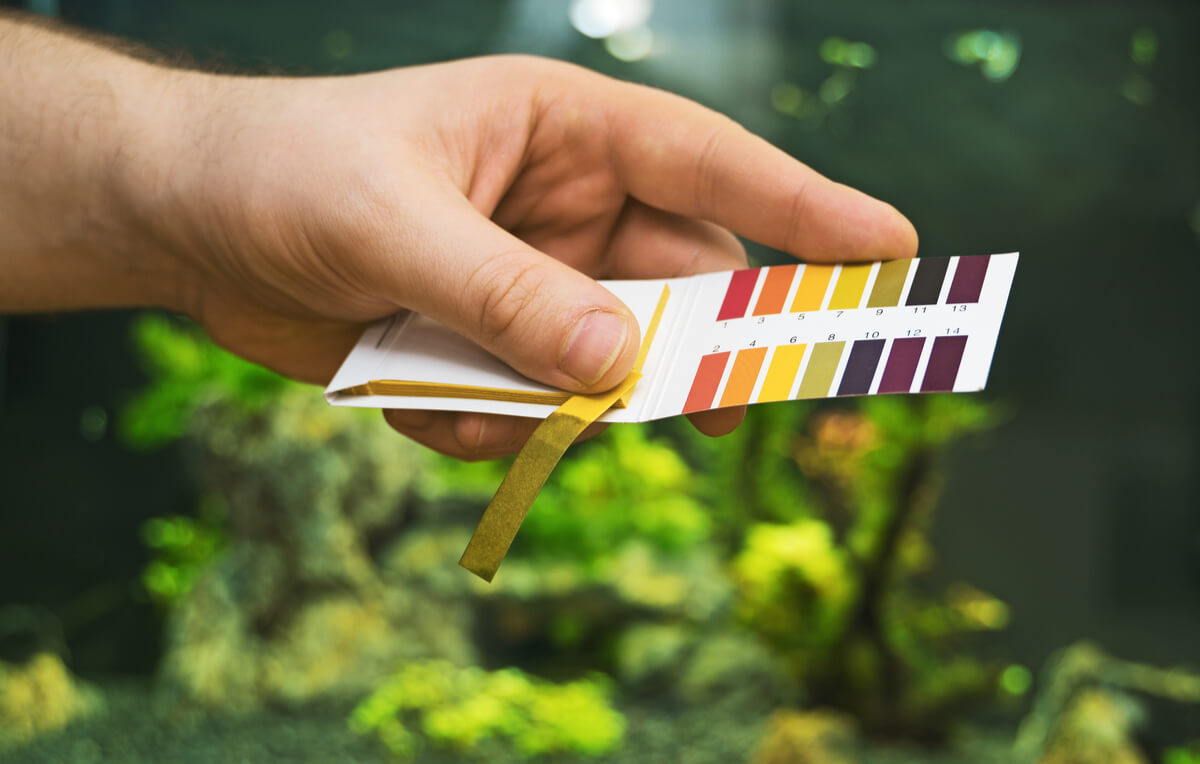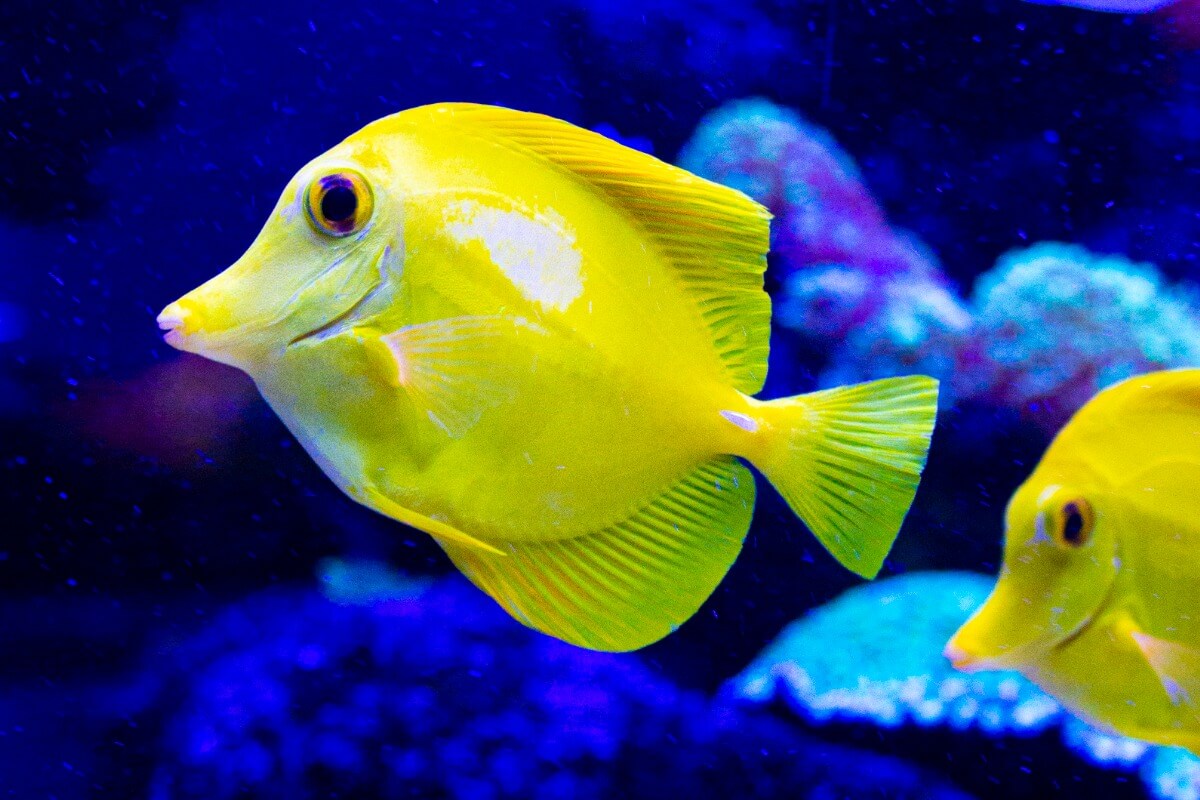9 Reasons why Tropical Fish Die in a Tank and How to Prevent It

Even though fish aren’t pets that you can interact with as much, they’re very popular because of their amazing colors and mannerisms. Tropical fish are one of the most colorful and beautiful groups of fish to keep as pets, although they aren’t always easy to care for. In fact, some species are not highly recommended for beginners, as any slightest change is fatal for the specimens. Continue reading this space and discover 9 reasons why tropical fish die in the tank.
Why can tropical fish die in a tank?
While it’s true that fish living in the tropics have fascinating colors, they’re also some of the most difficult specimens to care for. The main problems almost always have to do with their tank conditions, but there are other situations that need to be taken into account. Some of the reasons why tropical fish die in the tank are as follows.
1. Lack of tank maturation
This is perhaps one of the most common reasons why tropical fish die in the tank. When buying a new aquarium for your pets, you should always cycle the tank before putting the fish in.
What many people don’t realize is that the tank is home to both the fish and various microorganisms that help stabilize the water conditions. Without these microscopic creatures, the physicochemical characteristics of the liquid wouldn’t be adequate to support any fish.
The purpose of the cycling process is to facilitate the entry of these “good” microorganisms into the tank. Typically, cycling takes up to a month to complete, so it should be carried out well before the arrival of the fish.

2. Excess fish in the tank
All tanks have a limit to the number of organisms they can hold. This is because oxygen can also become scarce in the water, and so if too many fish are put in the tank, the fish may suffocate.
The number of fish a tank can hold depends very much on the size of the aquarium and the size of the fish. However, the general rule of thumb is that one liter (1.75 pints) of water can hold one centimeter (0.4 inches) of fish. Of course, this can change depending on the species, so it’s always best to take advice from an expert in order to design the aquarium according to the specific needs.
3. Incompatibility between fish
It’s important to note that some species of tropical fish are carnivorous and feed on other aquatic organisms. This means that if their companions aren’t well chosen, it’s most likely that you’ll observe aggressiveness, mutilations or even death of the fish.
In the same way, some fish are more aggressive, and they don’t tolerate interacting with other specimens. As a consequence, different conflicts appear that can cause stress in the tank and usually ends up in the death or injury of the specimens.
Before acquiring any tropical fish, make sure that they’re compatible with the other members of the tank. Otherwise, you could cause serious aggression or injury. The general rule of thumb is for fish to live with fish of a similar size. However, there are many exceptions, so get good advice before you cause serious conflict.
4. Poor tank maintenance
Tank filters are designed to keep the water cleaner for a longer period of time. However, they don’t prevent the aquarium from becoming dirty, so, at some point, they must be thoroughly cleaned. Although this rule may seem obvious to the more experienced keepers, many inexperienced people may be unsure about how the tank’s accessories function.
In general, the three most commonly used chemical parameters for checking tank conditions are ammonium, nitrite, and nitrate concentration. All of them are toxic compounds that can cause imminent death of the fish, so it’s best to keep them at their minimum levels to avoid problems.
Several measuring kits help you to find out the amount of these toxic compounds in the tank. It’s always advisable to verify that the ammonium and nitrate levels are at zero, while nitrates should be below 20 ppm (parts per million). If this isn’t the case, you would need to replace at least 20% of the water in the tank.

5. Stress
Stress is a physiological condition in which fish remain alert at all times. This state is actually a defense mechanism that can help them escape in life-threatening situations, but if it remains constant, it can wear down their bodies and damage their health.
Fish suffer from stress when there’s a deficiency in their care. The most obvious signs that a fish is stressed are the following:
- Glass surfing: This is when the fish swims steadily up and down very close to the glass.
- Physical changes: Any change in appearance such as loss of coloration, weight loss, or even damage on their bodies.
- Aggressive behavior: Behavior such as biting, hitting, or even chasing other fish could mean that your fish is stressed.
- Constant illnesses: Stress decreases your pet’s body defenses and makes it more susceptible to different pathologies.
To avoid any stressful situations in fish, you should check to see all their needs are met. If your fish exhibits any of the above signs, the best option is to isolate it and go to a qualified veterinarian to thoroughly check its situation.
6. Overfeeding fish
While it’s true that fish feed to satiety, overfeeding in the tank brings problems due to excess organic matter. This means that some pathogens could invade the tank and cause health problems in the fish. In addition, in these cases, the tanks become dirty very quickly, so they need to be cleaned frequently.
It’s important to make sure that tropical fish eat enough. As a general rule, if they take more than two minutes to eat when offered food, it means that they have reached satiety and it will be better to stop the feeding.
7. Excessive water changes
Another reason why tropical fish die in tanks is excessive water changes. Although in some cases it’s necessary to change the liquid to reduce the toxins it contains, this affects the other physicochemical conditions of the water. Consequently, the most sensitive specimens could suffer and even die in a short time.
It’s best to change at least 20% of the water in the tank per week. If this parameter is exceeded, it could mean that there’s a serious problem in the tank, such as overfeeding or overpopulation of the aquarium.
8. Lack of acclimatization in fish
All fish need to go through an acclimatization process prior to being introduced to a new tank. This allows them to adapt to their new home conditions and reduces the stress of the transfer. If this isn’t carried out very carefully, the specimens may die shortly after entering the aquarium.
Acclimatization consists of gradually exposing the fish to their new environment. To carry this out, you can put the fish in a bag containing water from its original source, and then submerge it (without opening it) in the tank for 15 minutes. The bag is then opened and the water from the tank is slowly mixed with the source water until it’s full.
This process should be carried out with any new incoming fish. Especially with tropical fish, as they’re much more sensitive to changing water conditions. This should be carried out preferably by using a quarantine tank to avoid transmission of pathogens.

9. Not using quarantine tanks
Water is an excellent medium for the transmission of various pathogens that affect fish. If a fish has a contagious disease, its companions will most likely become infected soon after. This often happens when a new species is acquired for the tank.
To prevent a dangerous or lethal infection from affecting tropical fish, it’s highly recommended to use quarantine tanks before bringing in a new fish. This means having a second functional tank in which the newcomer remains for at least one week. In this way, if any pathology is present, it can be treated quickly without exposing the others.
As you can see, most of these potentially fatal factors can be easily prevented if the proper recommendations are followed. Remember that the life of your fish is in your hands, so don’t spare any expense or resources when it comes to their health.
All cited sources were thoroughly reviewed by our team to ensure their quality, reliability, currency, and validity. The bibliography of this article was considered reliable and of academic or scientific accuracy.
- Bik, H. M., Alexiev, A., Aulakh, S. K., Bharadwaj, L., Flanagan, J., Haggerty, J. M., … & Coil, D. A. (2019). Microbial community succession and nutrient cycling responses following perturbations of experimental saltwater aquaria. MSphere, 4(1), e00043-19.
- Ehud, E. L. I. A., HODOȘAN, C., Nistor, L., Dumitrache, F., & Udroiu, N. A. (2015). System cycling stage on aquaponic systems as required prerequisite for soilless agriculture.
- Ron Moreta, C. F. (2021). El acuario como recurso didáctico para el desarrollo del valor del respeto a la naturaleza, en el nivel inicial II (Bachelor’s thesis, Universidad Técnica de Ambato-Facultad de Ciencias Humanas y de la Educación-Carrera de Educación Inicial).
- Almeida Brito, G. R. (2014). Diseño e implementación de un sistema automatizado de control de cambio de agua y mantenimiento de acuarios medianos y pequeños (Bachelor’s thesis, QUITO/EPN/2014).
- Andrade Ochoa, S., Erosa de la Vega, G., & Nevárez Moorillón, G. V. (2015). Amonio-oxidasas bacterianas y arqueales involucradas en el ciclo del nitrógeno. Terra Latinoamericana, 33(3), 233-245.
